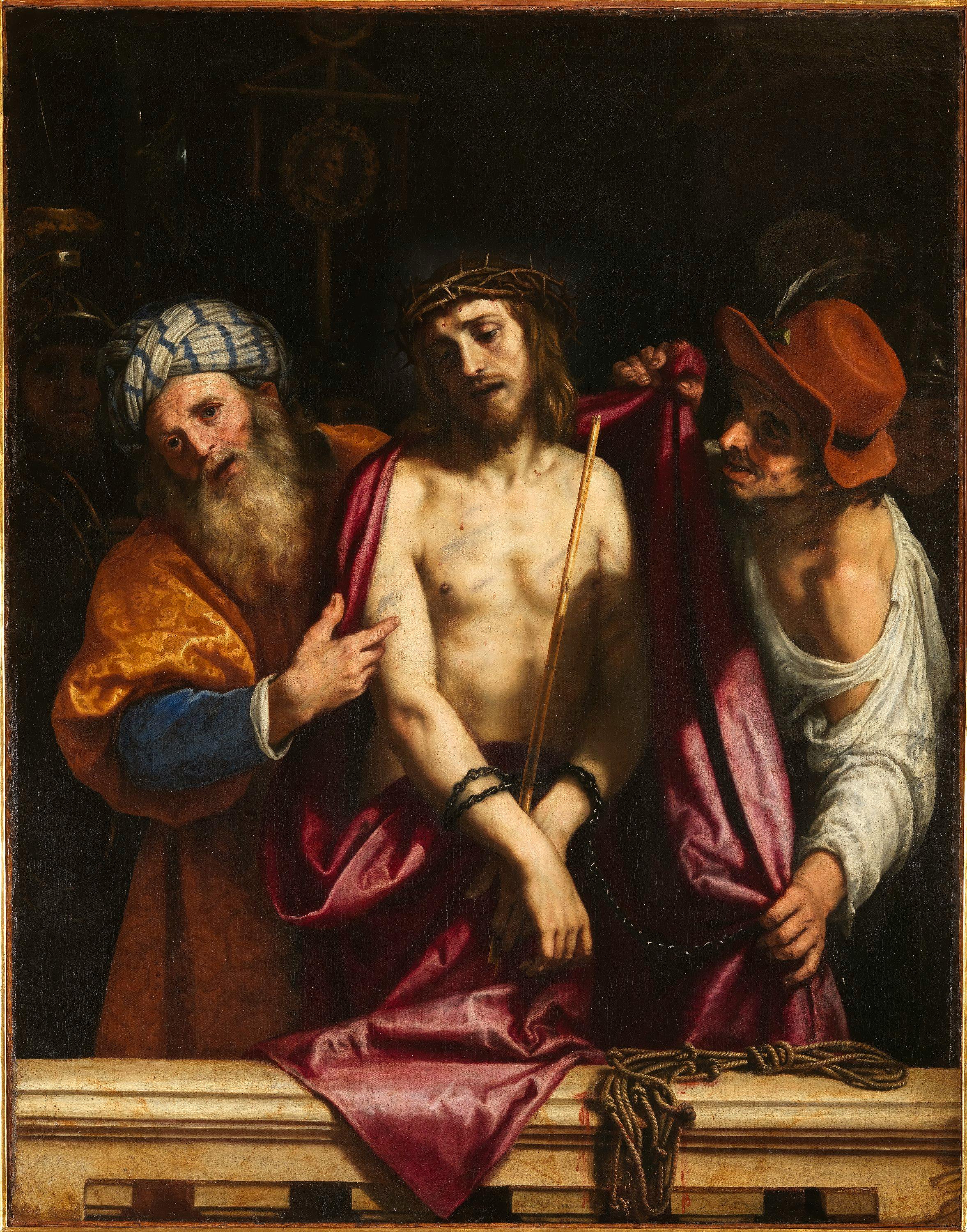Ecce Homo
Lodovico Cardi, detto il Cigoli (Cigoli, San Miniato 1559 - Roma 1613)
This painting - perhaps the best known by Ludovico Cigoli and considered one of his masterpieces - was commissioned by Massimo Massimi, a Roman nobleman. Cigoli’s biography, which was written by his nephew in 1628 – following a typical literary topos – tells how Massimo had also called upon two other painters of the time, Caravaggio and Domenico Passignano, to provide canvases on the same Christological theme. Cigoli beat his adversaries with this painting, in which the precious nature of the painted matter, the damasks, the satins and the velvets, together with the elegant Venetian-inspired colours, all blend with the intense naturalism of the faces, drawn from life. The illusion of perspective, created by the marble parapet in the foreground, adds a highly theatrical aspect to the scene, the result of a continued exchange between painters and scenographers in 17th-century Florence. The painting’s fame is also linked to this story, to the great resonance of the work as a standard for comparison with the realism of Caravaggio, both in the Roman and Florentine artistic contexts. It was already registered in the Florentine collection of Don Lorenzo de’ Medici before 1630 and shortly after (1638 ca.) to the collection of Grand Duke of Tuscany Ferdinando II de’ Medici. Since then, apart from a brief period in Spain and a temporary removal owing to the requisitions under Napoleon (1799-1815), the canvas has always remained in Pitti Palace.
